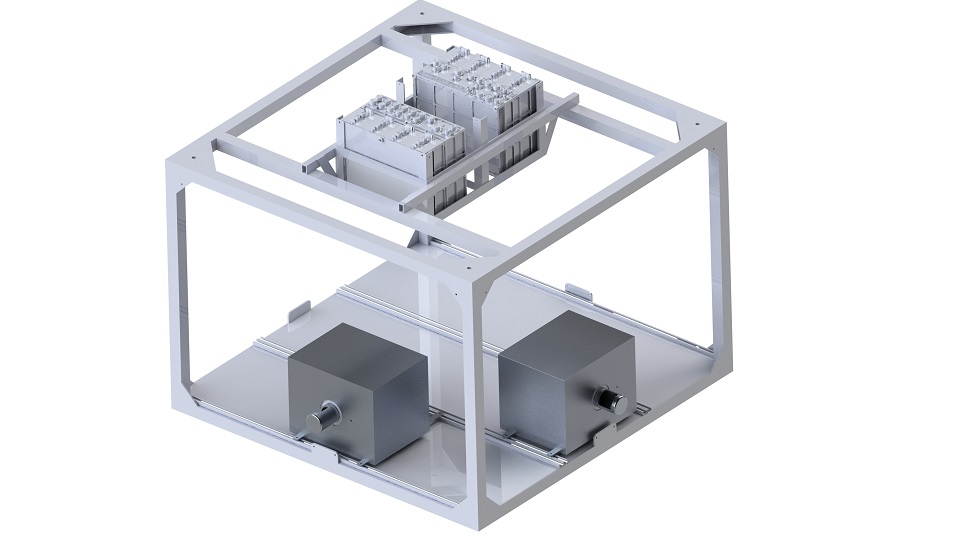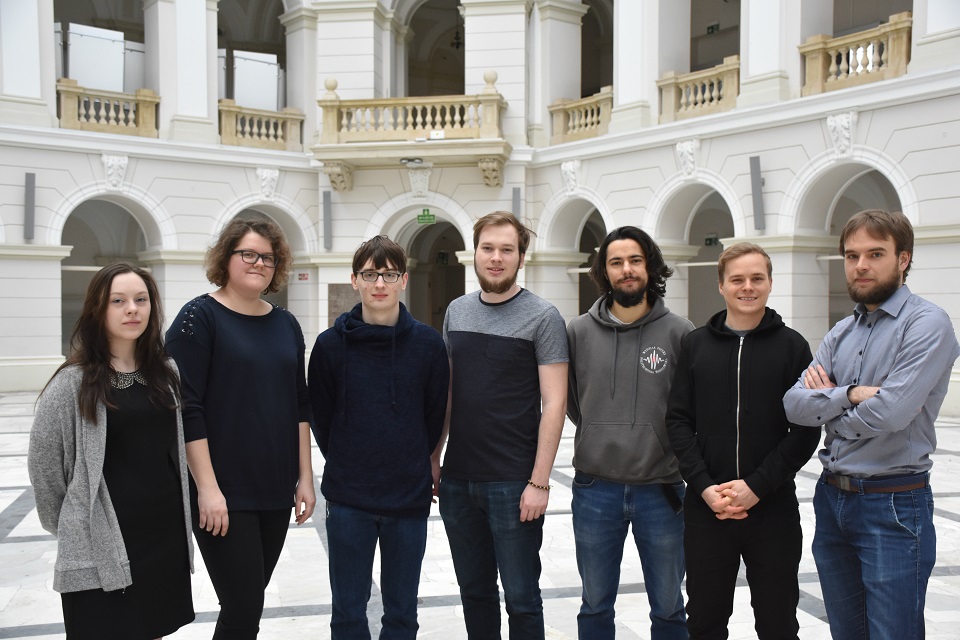Gaining better understanding of UV radiation - LUSTRO project
Business - Innovations – Technology
A group of students of the Warsaw University of Technology decided to explore the distribution of ultraviolet radiation in the different layers of the Earth’s atmosphere more precisely than ever before. They are implementing their idea under the German-Swedish student programme REXUS/BEXUS sponsored by the European Space Agency and other institutions. The program is addressed to students from all over Europe who want to develop technologies and research using stratospheric balloons and rockets.
Our students work on creating a system of sensors and rotating mirrors. Once ready, the system will be taken to an altitude of approx. 25–33 km by a stratospheric balloon and will remain there for a couple of hours. “During that time, two periscopes will collect data on UV radiation intensity,” explains Aleksander Masłowski, Project Coordinator. “The data will be saved into a memory card and transmitted in part via radio to a ground station to be analyzed for modifications during the flight through the atmosphere. We want to look at what happens, e.g., when the atmosphere density changes or clouds occur. We are especially interested in clouds and their impact on radiation intensity.”
Quest for the unknown and curious
Stratospheric research for UV radiation intensity is carried out mainly from space via satellites and from the Earth using sensors. There are also UV radiation distribution models based on years of measurement and experiments. But this is not enough for the WUT students. “We are driven by curiosity and desire to complement the existing scientific models. We want to know if they give a true picture of what it is really like. We want to find out if the radiation processes in the atmosphere are actually much more exciting than we think,” says Aleksander Masłowski.
The use of a stratospheric balloon to investigate ultraviolet radiation intensity is nothing new by itself. But the WUT students intend to take that research a step further. “There has been no experiment so far to check how this radiation changes in different directions and we want to clarify that all,” explains Aleksander Masłowski.
“The project offers an opportunity for us to get a fuller picture of the UV radiation distribution than ever before and, thus, to gain very thorough and useful understanding of when sun exposure could be particularly dangerous for humans.”
Hard work
LUSTRO (Light-and Ultraviolet Strato- and Tropospheric Radiation Observer) is the fourth project executed under the REXUS/BEXUS program by the members of the Astronautic Student Research Group Balloon Section operating at the WUT Faculty of Power and Aeronautical Engineering. “We pondered what issue in stratospheric research would be of particularly high relevance and decided that it would be UV radiation,” Aleksander Masłowski explains the idea.
Our students started to work on their undertaking in September 2017. They consulted scientists of the Warsaw University of Technology: Ph.D. Leszek Wawrzyniuk of the Faculty of Mechatronics and Ph.D. Agnieszka Siemion of the Faculty of Physics and with the Space Research Center. They also contacted the Institute of Geophysics, Polish Academy of Sciences. Here, Ph.D. Piotr Sobolewski offered them assistance. So far, the WUT team has successfully passed the Preliminary Design Review process and is preparing a presentation of the final design to the REXUS/BEXUS program experts.
Moreover, the team has also completed two off-site stages abroad: preliminaries during the Selection Workshop at ESTEC in Noordwijk, the Netherlands, and a one-week training session combined with a project review by ESA specialists in Sweden. “We are now getting ready to build a prototype and are looking for sponsors interested in supporting what we do,” says Justyna Wiśniewska.
Science and fun
“We are creating an experiment intended to have a scientific value but what matters to us as well is the lessons we learn from working as a team and about all stages of the design process,” says Justyna Wiśniewska.
“We are supposed to follow the European Space Agency’s approach to project work,” adds Aleksander Masłowski. “We have our own documentation. It’s about 80 page long at this time. I think it’ll ultimately reach about 200 pages.”
“There are 10 people on our team and it is very diverse because each activity requires a different set of knowledge and skills,” says Justyna Wiśniewska.
The balloon flight of the LUSTRO experiment (and a couple of other experiments by other teams) is scheduled for Fall 2018. Then, there will be the time for analyses. “Our first big success will be to set up the structure and find out it works properly, and the flight will be another, and the ultimate success for us will be to sit down once the research is done, cool down and think we have made it and it was really fun,” says Justyna Wiśniewska.
***
Team Members
- Management and Promotion: Aleksander Masłowski (University of Warsaw and Warsaw University of Technology; Project Coordinator, Mission Analysis) and Justyna Wiśniewska (Faculty of Management; Project Promotion)
- Mechanics: Edyta Żak (Faculty of Power and Aeronautical Engineering; Strength and Thermal Analysis), Damian Grabowski (Faculty of Power and Aeronautical Engineering; Mechanical Design of the Experiment) and Kamil Dąbrowski (Faculty of Power and Aeronautical Engineering; Experiment Testing, Thermal Analysis).
- Electronics: Mikołaj Owczarzak (Faculty of Mechatronics; Electronics Design) and Julia Wajoras (Faculty of Electrical Engineering, Software Development).
- Optics: Mateusz Surma (Faculty of Physics; Optical System Design, Simulations).
- Science: Michał Hałoń (Faculty of Power and Aeronautical Engineering; Flight Data Analytics) and Tomasz Aleksander Miś (Faculty of Electronics and Information Technology; Scientific Support).
Agnieszka Kapela
Office for Promotion and Information









